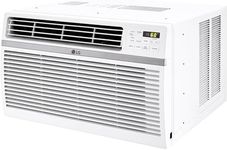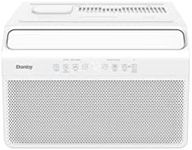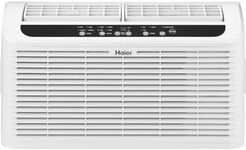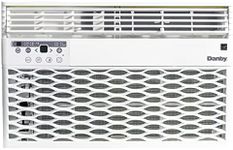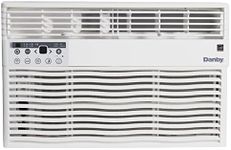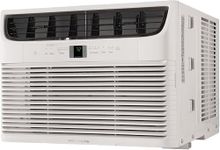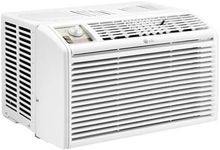Buying Guide for the Best Quiet Ac Window Units
Choosing a quiet window air conditioner is all about balancing cooling power, noise level, and features that fit your living space and comfort needs. Start by thinking about the size of the room you want to cool, how sensitive you are to noise, and any extra features that might make your life easier. Remember, the quietest unit for one person might not be the best for another, so focus on what matters most to you.Noise Level (dB)Noise level, measured in decibels (dB), tells you how loud the air conditioner will be when it's running. This is especially important if you plan to use the unit in a bedroom, office, or any space where quiet is a priority. Lower dB values mean quieter operation. Typically, window ACs range from about 40 dB (very quiet, like a library) to 60 dB (normal conversation level). If you are sensitive to noise or need the unit for a bedroom, look for models closer to 40-50 dB. For living rooms or less noise-sensitive areas, 50-60 dB may be acceptable.
Cooling Capacity (BTU)Cooling capacity, measured in British Thermal Units (BTU), indicates how much heat the unit can remove from a room per hour. This is important because a unit that's too small won't cool effectively, while one that's too large may cycle on and off too often, wasting energy and not dehumidifying properly. Small rooms (up to 150 sq ft) usually need 5,000-6,000 BTU, medium rooms (150-350 sq ft) need 7,000-8,000 BTU, and large rooms (350-550 sq ft) need 10,000-12,000 BTU. Match the BTU rating to your room size for the best comfort and efficiency.
Energy Efficiency Ratio (EER/CEER)The Energy Efficiency Ratio (EER) or Combined Energy Efficiency Ratio (CEER) tells you how efficiently the unit uses electricity to cool your space. A higher EER or CEER means the unit uses less energy for the same amount of cooling, which can save you money on your electricity bill and is better for the environment. EER values typically range from 8 to 12. If you use your AC often or want to minimize energy use, look for higher EER/CEER ratings.
Fan Speeds and ModesFan speeds and operating modes let you control how the AC cools and circulates air. More fan speeds and modes (like sleep, eco, or quiet mode) give you flexibility to adjust the unit for comfort and noise. If you want the quietest operation, look for units with a dedicated 'quiet' or 'sleep' mode, which usually lowers fan speed and noise. If you like more control over airflow, choose a unit with multiple fan speeds.
Installation and FitInstallation and fit refer to how well the unit will fit in your window and how easy it is to install. A good fit helps reduce noise from vibrations and air leaks. Measure your window before shopping and check the unit's dimensions and installation requirements. If you want a quieter experience, make sure the unit fits snugly and is installed according to the instructions, as poor installation can increase noise.
Remote Control and Smart FeaturesRemote controls and smart features (like Wi-Fi connectivity or app control) make it easier to adjust settings without getting up. While these don't directly affect noise, they can help you quickly switch to quieter modes or adjust the temperature for comfort. If convenience is important to you, look for units with these features.
